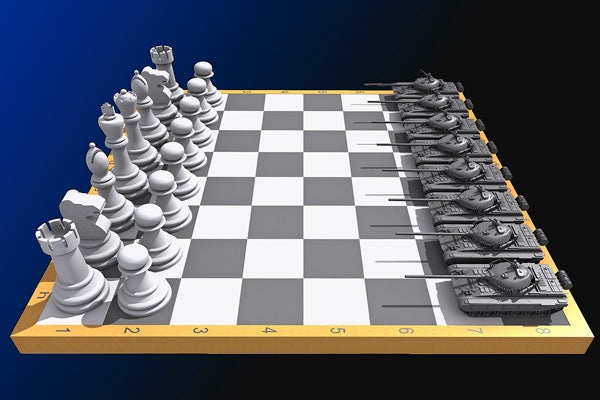|
March 3, 2014
Stanford scholar: Grand strategy misguided in post-9/11 world
Political scientist Amy Zegart argues that the notion of an American foreign policy grand strategy in the post-9/11 world is a relic of Cold War thinking. Today's threats are much more complex and shifting than ever before. Rather, U.S. international relations should be based on 'orienting principles' – a middle ground between ad hoc reactions and unrealistic grand visions. By Clifton B. Parker

In a new essay, political scientist Amy Zegart argues that the notion of an American foreign policy grand strategy in the post-9/11 world is a relic of Cold War thinking. (Image: Nikonaft / Shutterstock) In the post-9/11 world, forging a successful grand strategy in U.S. foreign policy is unlikely and dangerous, according to a Stanford scholar.
During the Cold War, American leaders understood that the Soviet Union was their primary adversary, writes political scientist Amy Zegart in an essay for the Hoover Institution's Foreign Policy Working Group, a new two-year initiative that brings together Stanford scholars to examine key U.S. foreign policy challenges.
Zegart notes that the Soviet threat – one of nuclear annihilation – brought a singular focus to U.S. foreign policy for the second half of the 20th century.
Successful grand strategies, she writes, depend on knowing the number and identities of one's enemies, what they want, how they operate and what damage they can unleash.
That is no longer the case in 2014 and for the foreseeable future, she suggests.
"The post-9/11 threat environment is vastly different," notes Zegart, co-director of the Center for International Security and Cooperation at Stanford. Today, the number, identity and magnitude of dangers threatening American interests are all "wildly uncertain."
Exactly how many principal adversaries does the United States face at any given time? Who are they and what do they want? What could they do to America? Is China a rising threat or a responsible stakeholder? How likely is a "digital Pearl Harbor" that cripples U.S. strategic forces or financial institutions?
The answer to all these questions, she writes, is that nobody really knows: "Each day, it seems, we are told to be very afraid about something different and vaguely sinister."
On top of this, grand strategy requires dynamic international collaboration. But organizations like NATO, the International Monetary Fund and the United Nations Security Council are "out of whack with current power realities," writes Zegart. Gaps exist between the "aspirations and capabilities" of international organizations that typically forge partnerships with America.
A new approach
If grand strategy is outdated – and even dangerous – what can be done?
The first step is to give up on notions of grand strategy, Zegart advises. Instead, the United States should strive for what Stanford political scientist and working group co-chair Stephen Krasner, a senior fellow at the Freeman Spogli Institute for International Studies, calls "orienting principles." These are policy ideas that lie between ad hoc reactions to arising situations and grand visions of how the future should unfold.
"Orienting principles aren't glamorous," Zegart writes, "but they hold out the prospect of something better than foreign policy a la carte or a grand strategy that mis-estimates the threat environment and misunderstands the organizational requirements for success."
When grand strategies work well, they are truly grand, says Zegart. "That is, they must be able to anticipate and articulate a compelling future state of the world and galvanize the development of policies, institutions and capabilities at the domestic and international level to get us there. That's hard enough."
A second challenge, she adds, is the strategic interaction part of grand strategy, which requires thwarting and adjusting to the countermoves of principal adversaries.
"Grand strategy is not a game of solitaire, where we come up with all the moves and the cards just sit there. It's not all about us and our big ideas," she notes.
Instead, grand strategy is a multi-player game with powerful adversaries seeking to impose their national wills on the world to serve their own interests, Zegart observes.
"The sorry truth is that American grand strategies are usually alluring but elusive," she concludes. "The Cold War this isn't. We live in a hazy threat du jour world. This is too much complexity and uncertainty for grand strategy to handle."
For more Stanford experts in political science and other topics, visit Stanford Experts.
-30-
|